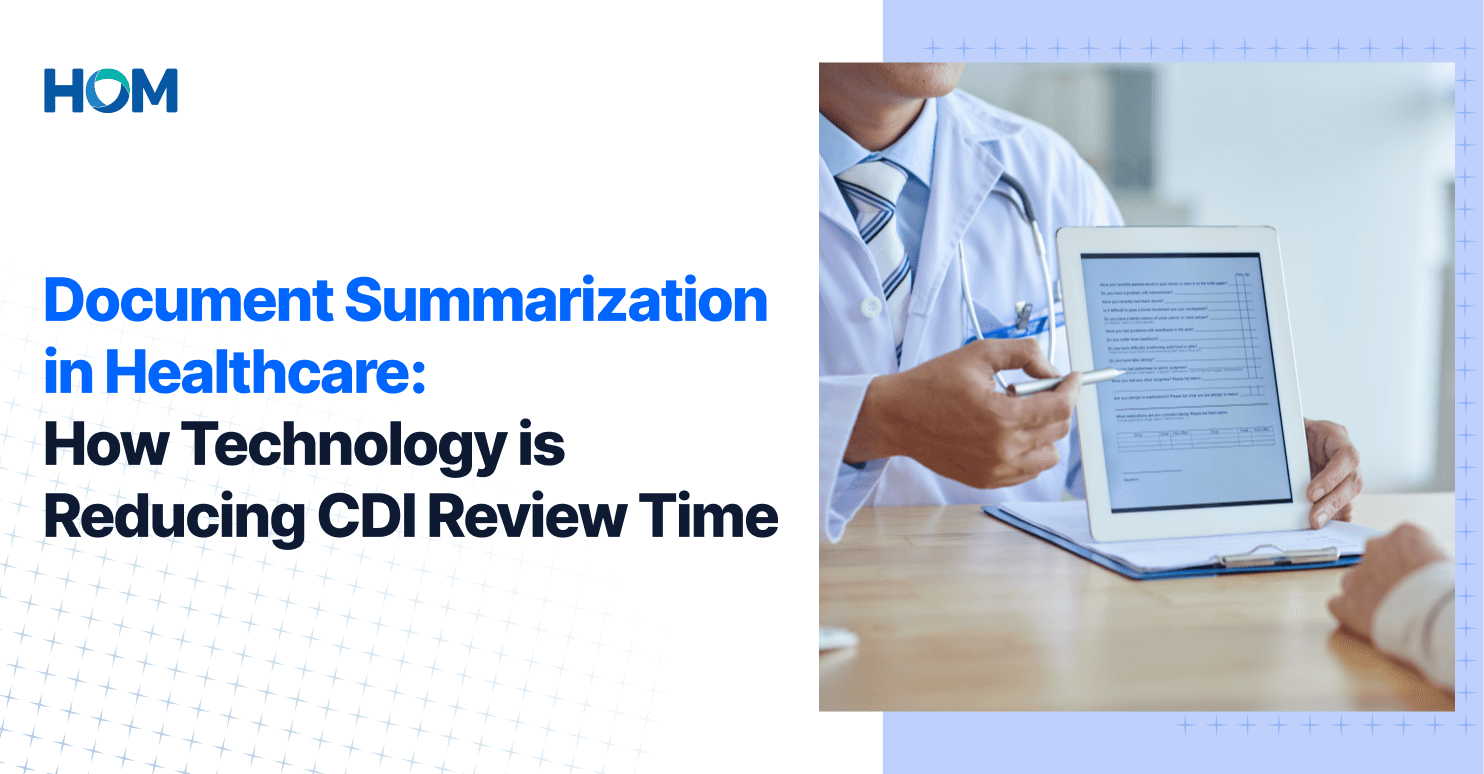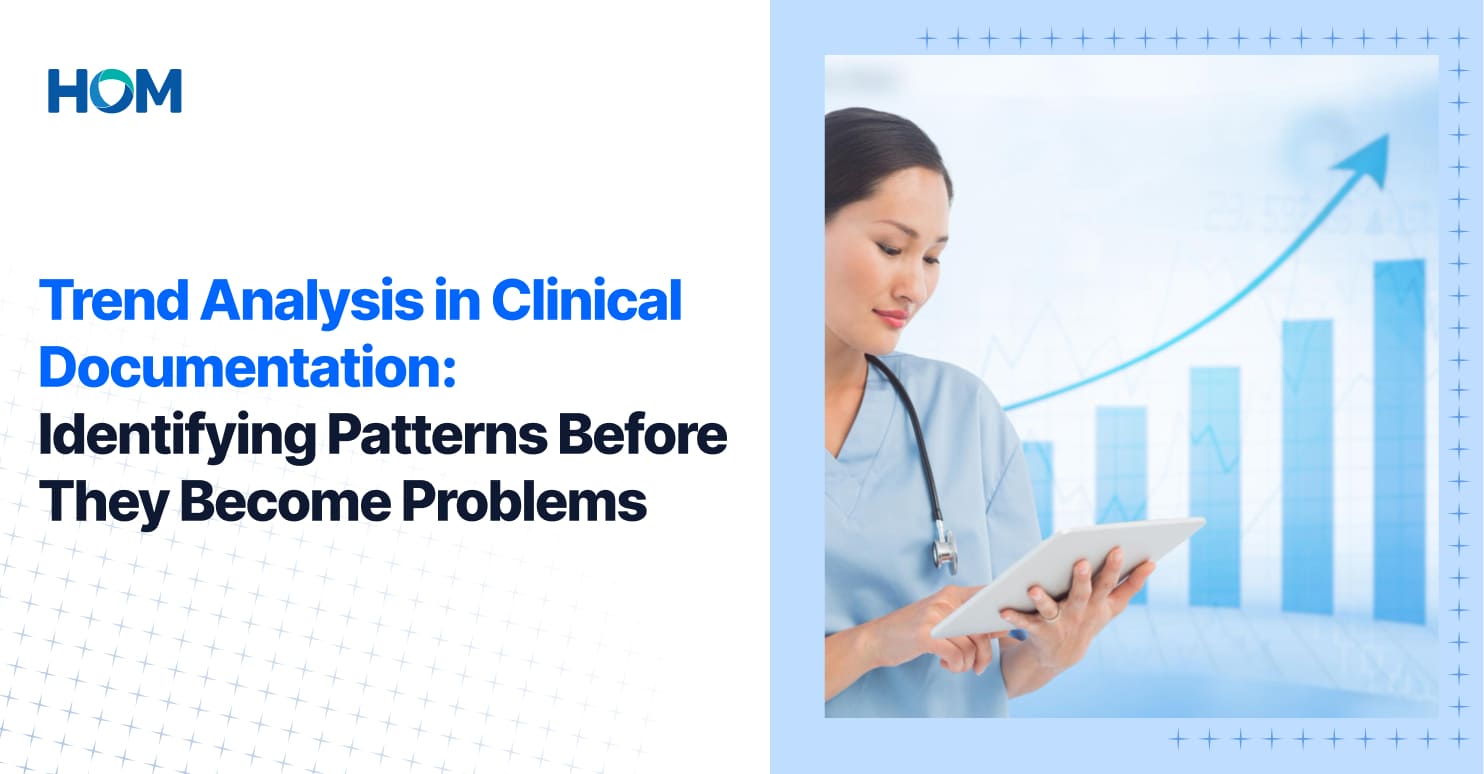
Clinical Documentation Improvement (CDI) teams are essential to accurate medical coding, risk adjustment, and reimbursement. Yet one persistent challenge undermines their efficiency: the overwhelming volume of medical documentation.
An inpatient record could easily be around 70–100 pages, filled with physician notes, lab results, and discharge summaries. CDI professionals have to sift through all of this to catch documentation gaps, validate diagnoses, and make sure the record meets compliance standards.
The manual process is repetitive, time-consuming, and prone to human fatigue. The result? Slower revenue cycles, higher query backlogs, and a greater risk of missed documentation opportunities.
This is where tech-driven document summarization becomes a game-changer. By condensing lengthy, unstructured notes into precise, context-rich summaries, it surfaces the details CDI specialists need most, allowing them to focus more on improving medical documentation quality and provider engagement.
What is Document Summarization in Healthcare?
Healthcare document summarization applies Natural Language Processing (NLP) and machine learning to distil lengthy, unstructured clinical records into concise, structured summaries.
Unlike conventional search functions, summarization doesn't merely retrieve keywords—it interprets the context and highlights the important clinical considerations for CDI staff, such as:
- Principal and secondary diagnoses
- Treatment interventions and procedures
- Symptom progression and severity
- Risk factors and comorbidities
- Medical documentation gaps or inconsistencies
For example, instead of scrolling through 20 pages of a progress note, a CDI specialist could receive a one-page summary highlighting “acute on chronic systolic heart failure,” lab results pointing to renal impairment, and recent medication changes—all cross-referenced back to the original EHR entries for verification.
Why Traditional CDI Reviews Fall Short
Before understanding how summarization helps, it’s worth looking at why today’s manual review process has become increasingly intense and/or inefficient:
- Time pressure: Inpatient encounter needs to be reviewed within 24–48 hours, but manual reading slows down the response.
- Information overload: Multiple specialities document differently; finding critical details means navigating inconsistent note styles.
- Missed details: Fatigue and repetitive scanning increase the chance of missing severity indicators such as "with exacerbation" or "acute on chronic."
- Administrative burden: Highly trained CDI specialists spend hours on chart review instead of provider education or complex case analysis.
The bottom line: The traditional process forces specialists to act more like human search engines than as clinical experts, which is neither sustainable nor cost-effective.
How Document Summarization Transforms CDI Efficiency
Document summarization replaces hours of manual review with targeted insights, directly resolving the pain points of traditional CDI workflows. Here’s how it does it:
1. Rapid identification of key diagnoses
AI-powered summarization quickly reviews the entire patient chart and pinpoints both primary and secondary diagnoses. These are mapped to ICD-10, HCC, and DRG standards for accuracy and compliance. This means CDI staff can zero in on relevant conditions immediately instead of parsing through redundant or irrelevant text.
2. Highlighting clinical indicators and MEAT criteria
Effective CDI depends on documentation meeting MEAT standards (Monitor, Evaluate, Assess, Treat). Summarization tools can flag places where diagnoses are mentioned without supporting evidence. For instance:
- Diagnosis “Diabetes mellitus” → flagged because supporting labs or insulin therapy notes are missing.
This streamlines query management for CDI teams and ensures audit-ready medical documentation is always available.
3. Cross-referencing across Notes
Summarization connects information from progress notes, labs, and consults into a unified view. If the nephrologist notes "CKD stage 4," but the hospitalist only documents "renal insufficiency," the summarization tool brings forth the discrepancy, assisting CDI specialists to issue clarifications without having to scroll through separate EHR sections.
4. Real-Time alerts for missing specificity
Instead of waiting for post-discharge queries, summarization can generate alerts during active encounters. Example: “Asthma” is documented, but severity is unspecified → flagged immediately for provider clarification. This reduces rework and accelerates query turnaround.
5. Structured, searchable summaries
The outputs go beyond condensed text—they appear as structured dashboards where diagnoses, labs, procedures, and queries are logically organized. This structure lets CDI staff finish reviews in minutes that once demanded hours.
Why Human Oversight Still Matters
While healthcare document summarization accelerates chart navigation, it enhances rather than replaces human CDI expertise. Critical limitations include:
- Clinical reasoning: AI can summarize, but it cannot weigh causality (e.g., did sepsis lead to AKI or vice versa?).
- Compliance accountability: In an audit, the justification still depends on human interpretation and defensibility.
- Education value: Provider engagement and long-term documentation improvement require human dialogue, not just flagged alerts.
At HOM, summarization technology serves as a force multiplier. They automate the tedious aspects of chart review, while human CDI specialists validate that insights are accurate, compliant, and clinically relevant.
Final Takeaway
With clinical records becoming increasingly detailed and complex, manual CDI review is no longer sustainable or cost-effective. Document summarization transforms the process by reducing review time, bringing vital insights forward, and allowing CDI specialists to concentrate on documentation integrity and patient care.
At HOM, we embed document summarization into our CDI workflows—spanning progress notes, operative reports, discharge summaries, and consults. Our AI-powered document summarization integrates seamlessly with your existing EHR systems, requiring no disruption to current workflows. Along with our team of AHIMA/AAPC-certified professionals, this integration triggers quantifiable results: 24-hour turnaround for chart reviews, greater than 98% coding accuracy, and up to a 40% increase in RAF scores.
Request a free CDI audit from HOM to evaluate your current processes and uncover where AI-driven summarization can save time, protect revenue, and strengthen compliance for your organization.
You can also connect with us at partnerships@homrcm.com.
Bring a change to your Healthcare Operations
A partnership with HOM gives you an inherent:
Connect with our experts for a quick analysis and possibilities.

















